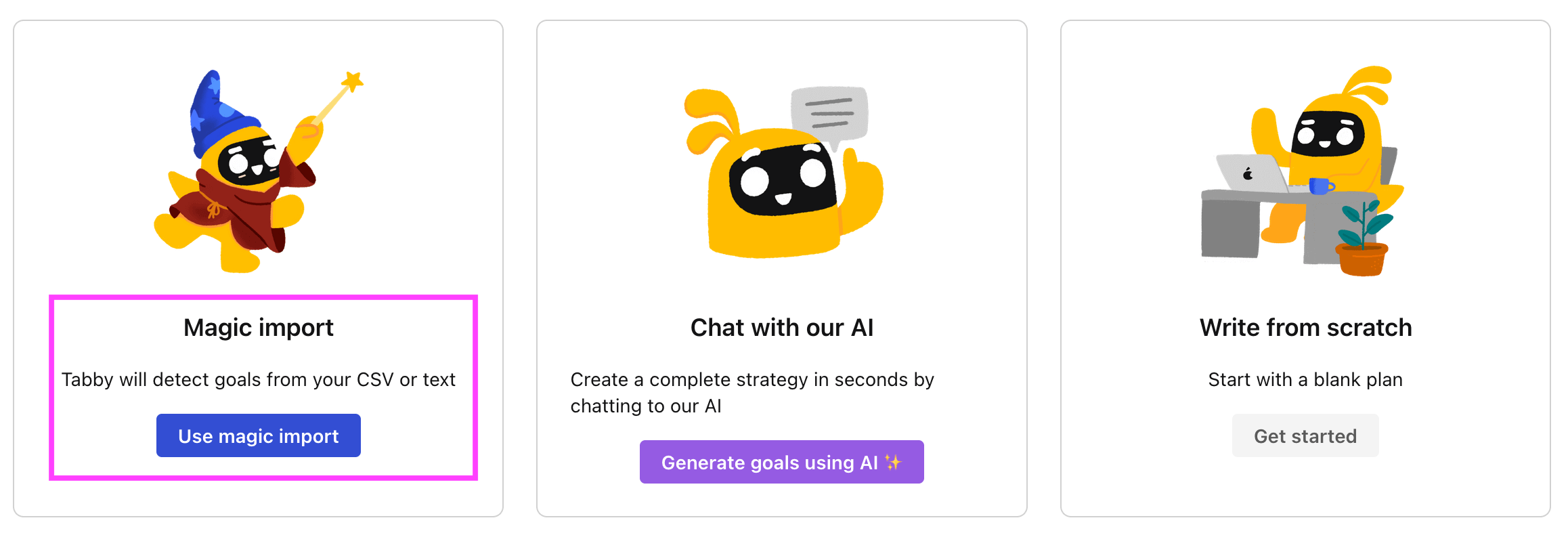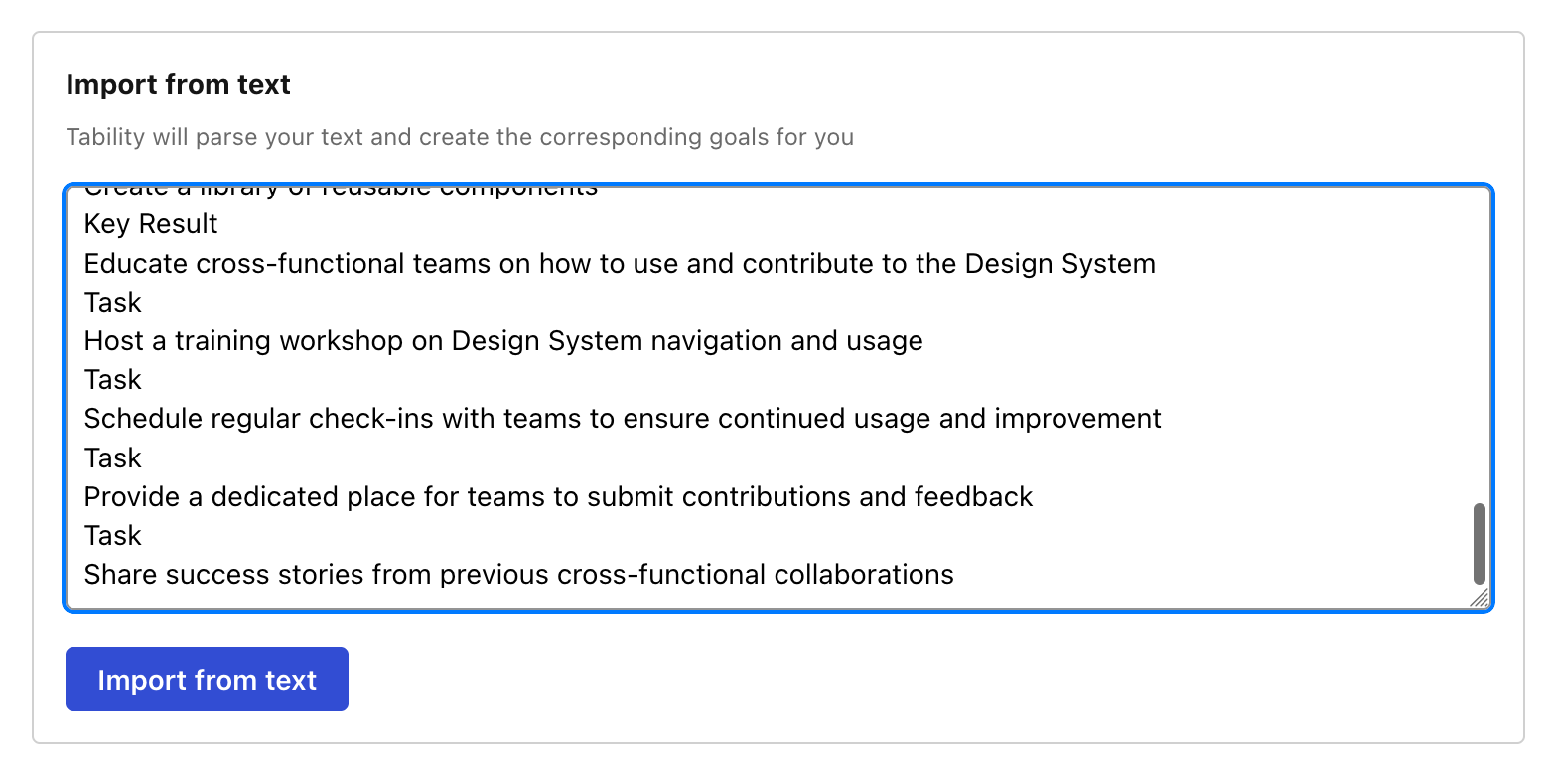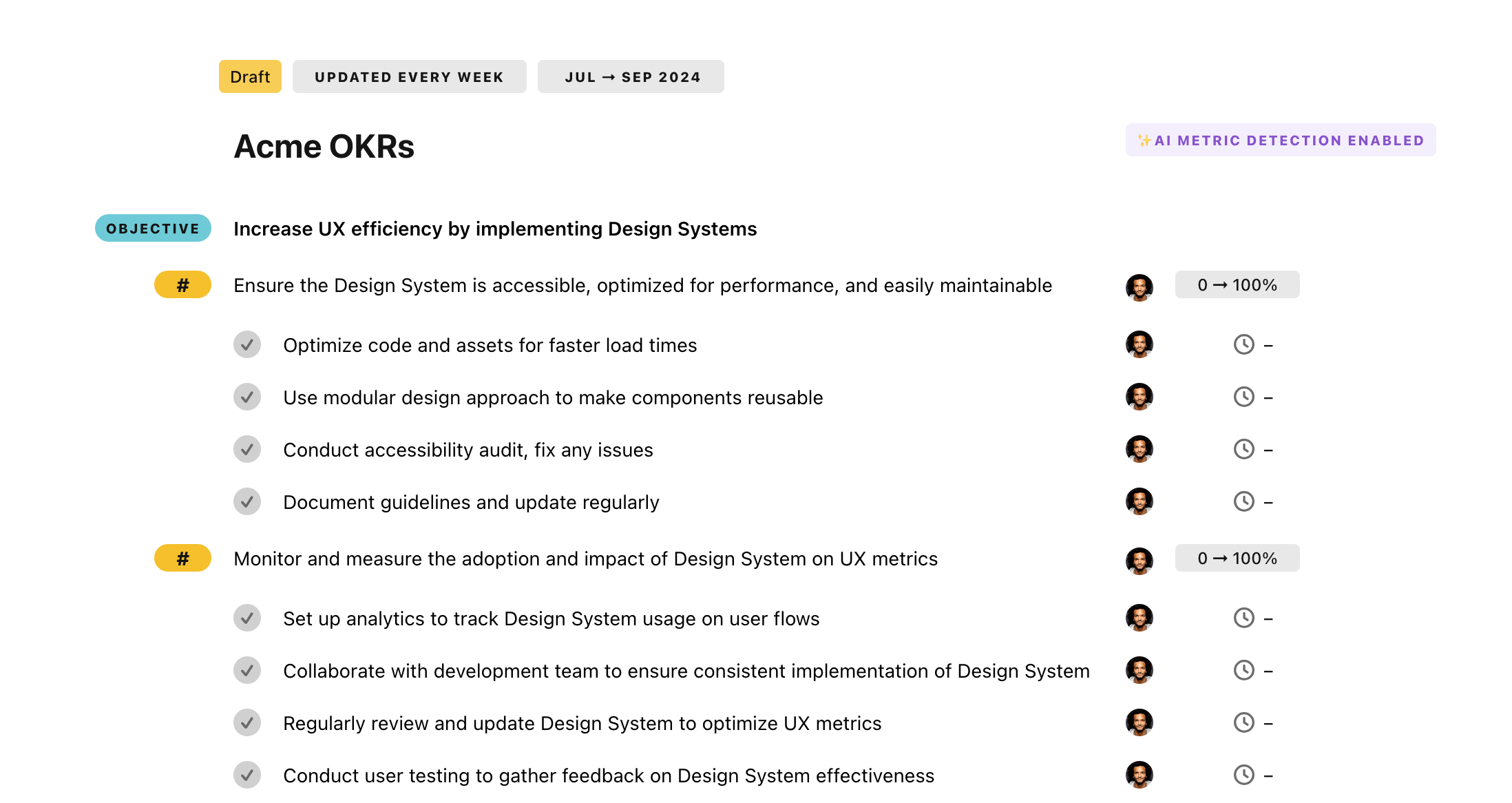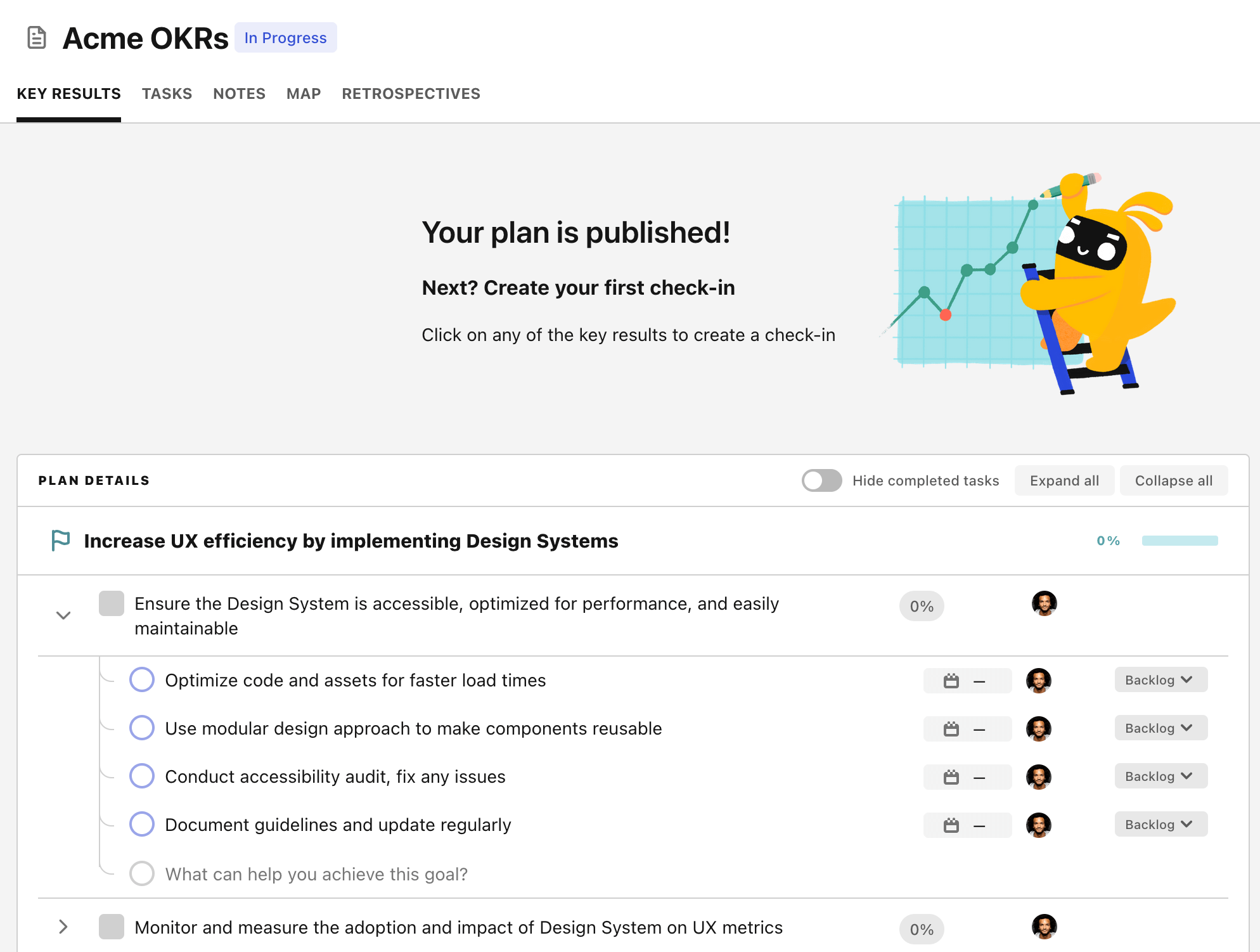OKR template to streamline maintenance request and incident handling process
Your OKR template
The second objective is tied to reducing incident closure times. By adopting a decrease of 20%, the OKR aims to formulate streamlined incident management processes, provide efficient incident resolution technique training to staff, and ensure performance is evaluated and monitored frequently.
The final delivery point revolves around the amelioration of customer satisfaction associated with incident management. To achieve a 10% increase in satisfaction, strategies involving customer feedback collection after incidents are resolved, streamlining of the response procedure, and customer service training provision to the staff are suggested.
Overall, this OKR captures a holistic approach to maintaining and managing requests and incidents. It draws focus on increasing efficiency and effectiveness in response and handling while improving customer satisfaction via feedback and better service.
ObjectiveStreamline maintenance request and incident handling process
KRReduce response times to maintenance requests by 15%
Schedule regular preventive maintenance checks
Train staff in effective, efficient problem resolution
Implement a prioritized ticketing system for maintenance requests
KRDecrease incident closure times by 20%
Implement streamlined incident management processes
Train staff on efficient incident resolution techniques
Monitor and evaluate performance regularly
KRImprove customer satisfaction rate regarding handled incidents by 10%
Implement customer feedback surveys after incident resolution
Streamline incident response procedure
Provide staff with customer service training
How to edit and track OKRs with Tability
You'll probably want to edit the examples in this post, and Tability is the perfect tool for it.
Tability is an AI-powered platform that helps teams set better goals, monitor execution, and get help to achieve their objectives faster.
With Tability you can:
- Use AI to draft a complete set of OKRs in seconds
- Connect your OKRs and team goals to your project
- Automate reporting with integrations and built-in dashboard
Instead of having to copy the content of the OKR examples in a doc or spreadsheet, you can use Tability’s magic importer to start using any of the examples in this page.
The import process can be done in seconds, allowing you to edit OKRs directly in a platform that knows how to manage and track goals.
Step 1. Sign up for a free Tability account
Go tohttps://tability.app/signup and create your account (it's free!)
Step 2. Create a plan
Follow the steps after your onboarding to create your first plan, you should get to a page that looks like the picture below.

Step 3. Use the magic importer
Click on Use magic import to open up the Magic Import modal.
Now, go back to the OKR examples, and click on Copy on the example that you’d like to use.

Paste the content in the text import section. Don’t worry about the formatting, Tability’s AI will be able to parse it!

Now, just click on Import from text and let the magic happen.

Once your example is in the plan editor, you will be able to:
- Edit the objectives, key results, and tasks
- Click on the target 0 → 100% to set better target
- Use the tips and the AI to refine your goals
Step 4. Publish your plan
Once you’re done editing, you can publish your plan to switch to the goal-tracking mode.

From there you will have access to all the features that will help you and your team save hours with OKR reporting.
- 10+ built-in dashboards to visualise progress on your goals
- Weekly reminders, data connectors, and smart notifications
- 9 views to map OKRs to strategic projects
- Strategy map to align teams at scale